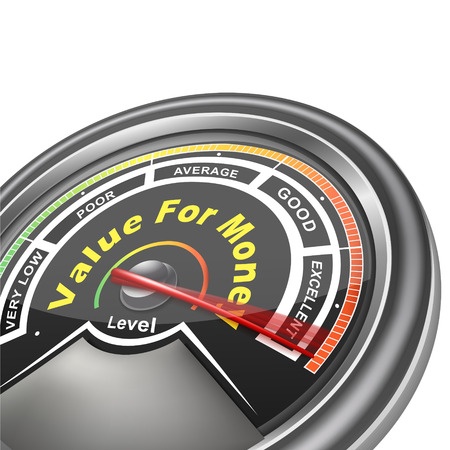-
What Companies Don’t Know About Sales
- November 10, 2023
- Posted by: Dave Kurlan
- Category: Understanding the Sales Force

We heard that the “Sound of Freedom” was a good movie but waited until we could stream it at home. We loved the movie, but we were moved even more by the closing messages displayed on the screen. The statistics are astounding, where as a result of human trafficking, mostly at the southern border, more children are enslaved today than when slavery was legal! We didn’t know what we didn’t know.
“Companies don’t know what they don’t know about sales” is true in most companies and sales organizations.
-
Top 10 Keys to Determining and Improving Your Ideal Win Rate
- March 7, 2023
- Posted by: Dave Kurlan
- Category: Understanding the Sales Force

What kind of car should you drive?
Answering that question with anything other than, “It depends,” is irresponsible because there are so many variables. Choosing a car depends on budget, family size, how much stuff you load into your car, the length of your drives, the logo/ego influence, fit and function, ergonomics, appearance, perceived value, reliability, cost to drive it (gas/electric/mileage), and so much more.
If that makes senses, why do companies struggle when I am unable to instantly tell them what their win-rate or closing percentage should be?
There are so many the variables that can influence your sales win-rate and here are my top ten keys to win rates:
-
9 Reasons Why Salespeople Lack the Urgency Necessary to Succeed
- September 25, 2017
- Posted by: Dave Kurlan
- Category: Understanding the Sales Force

I coach a lot of sales leaders and their most common frustration is that they can’t understand why their salespeople don’t seem to have the same urgency as they did when they were selling.
-
Selling Value – Everything You Always Wanted to Know
- December 4, 2014
- Posted by: Dave Kurlan
- Category: Understanding the Sales Force

So if not those topics, then what should we all be writing about – all the time – that would be a real difference maker for salespeople?
I believe that it’s the importance of and ability to sell value. Why, you ask?
-
Top 10 Reasons For Inaccurate Forecasts
- February 28, 2014
- Posted by: Dave Kurlan
- Category: Understanding the Sales Force
We joke a lot about sales forecasts being no more accurate than weather forecasts, but everything is relative. An inaccurate forecast of cloudy won’t have much of an impact on anyone, but an inaccurate forecast of sunny and warm might. An inaccurate forecast of flurries might not cause a problem if they don’t materialize, but an inaccurate forecast of a foot of snow – in either direction – has serious consequences.
Inaccurate sales forecasts are legendary. Here are the 10 most common reasons why salespeople, sales managers, Sales Directors and CEO’s suffer from this:
-
Sales Force Motivation – Learn From the Red Sox Miraculous Comeback
- October 17, 2008
- Posted by: Dave Kurlan
- Category: Understanding the Sales Force
When salespeople have plenty of opportunities and have experienced plenty of difficult sales cycles, it’s not such a big deal when an important opportunity dies. But if it’s a salesperson that has very few quality opportunities or one who hasn’t experienced very many deals that went sour, they react – badly – by getting quite emotional, discouraged, and upset.
-
Top 10 Factors for Getting Salespeople to Overachieve
- February 4, 2007
- Posted by: Dave Kurlan
- Category: Understanding the Sales Force
There isn’t a single key to overachieving, so I’ll list my top 10 factors for helping salespeople overachieve. I’m sure I’ve written about each of these topics at some point in the past, but I’ll put them all together here.
-
More on the Pipeline
- September 4, 2005
- Posted by: Dave Kurlan
- Category: Understanding the Sales Force
I recently wrote about the importance of a balanced pipeline but, in that article, didn’t comment on the required size of the pipeline. Size will vary by company, industry, average order, and salesperson but I’ll attempt to provide a common formula that should work for everyone.
-
Pay Attention to the Pipeline
- August 30, 2005
- Posted by: Dave Kurlan
- Category: Understanding the Sales Force
I’ll bet you don’t know whether each of your salespeople have enough opportunities in the pipeline. Oh, you do know that one? Sorry. That’s right. None of them have enough opportunities in the pipeline. And lastly, I’m sure you don’t know whether each salesperson’s pipeline is balanced. What is a balanced pipeline?
-
Be Still My Pipeline
- May 1, 2005
- Posted by: Dave Kurlan
- Category: Understanding the Sales Force
We evaluated a sales force this week that had pipeline problems. Most companies have pipeline problems; they simply lack the awareness to recognize how serious those problems are. Of even more concern is how long it takes to fix a faulty pipeline.

